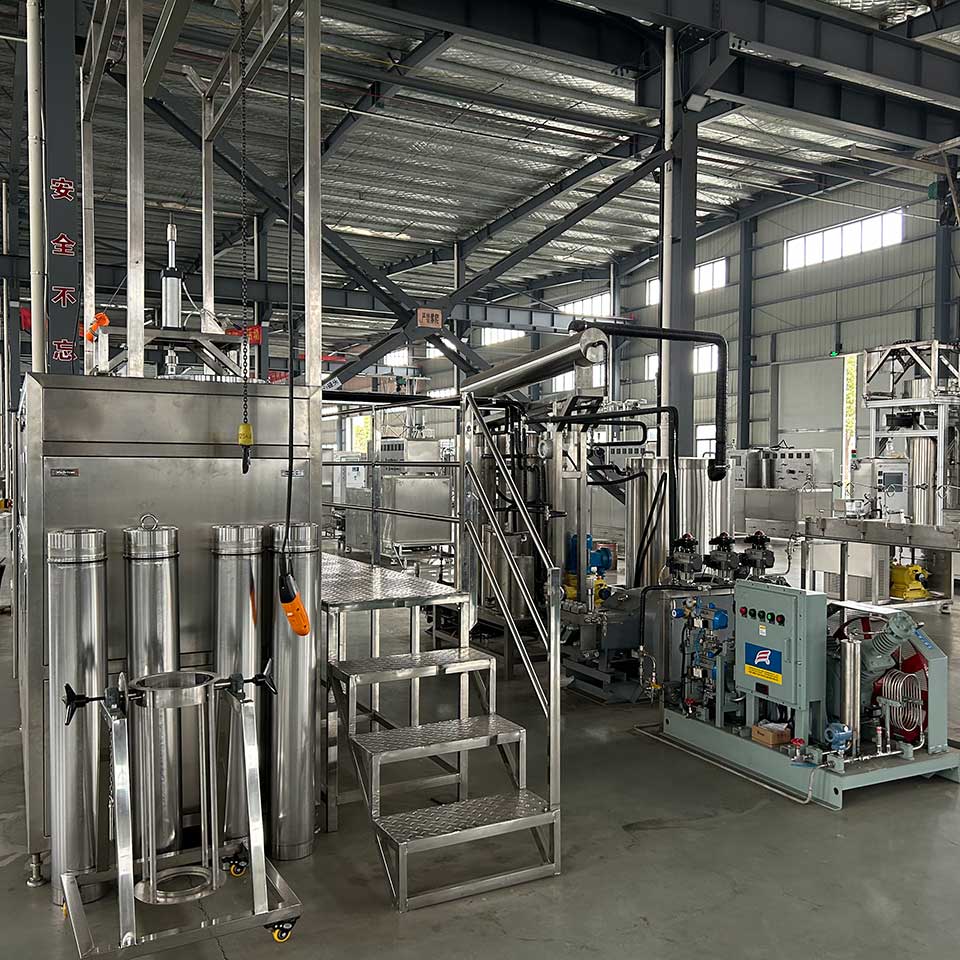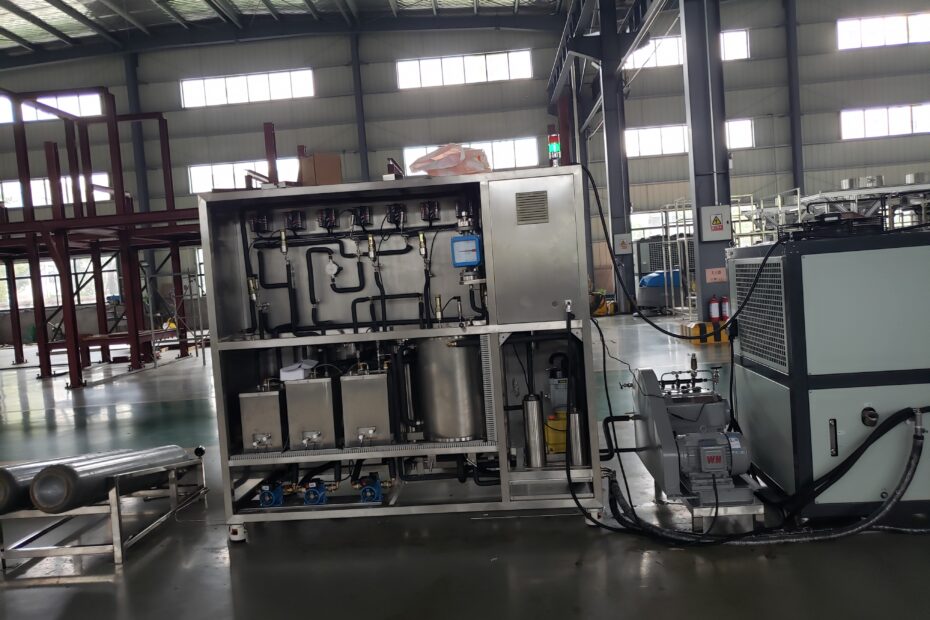Supercritical fluid is a special state of matter between gas and liquid. It appears only when temperature and pressure exceed the critical point. In this state, the fluid combines gas-like diffusivity with liquid-like density, making it an excellent extractant.
Supercritical fluid has high density similar to liquid but low viscosity close to gas. As a result, it flows easily and penetrates materials effectively. Therefore, industries often choose supercritical CO2 as the most practical and eco-friendly solvent.
Principle of Supercritical CO2 Extraction
The principle of supercritical CO2 fluid extraction relies on the relationship between fluid density and solubility. By adjusting temperature and pressure, operators can control the solubility of compounds. In supercritical conditions, CO2 selectively extracts substances based on polarity, molecular weight, and boiling point. This feature makes the method flexible and highly efficient.
Process Flow of SFE
The process flow of supercritical CO2 extraction changes depending on the raw material and extraction goal. Typically, the operation uses a high solvent feed ratio, strong airflow, and low viscosity. To increase mass transfer rates, operators should reduce diffusion distance, increase diffusion coefficients, and eliminate barriers. Applying fluid dynamics theory helps optimize extraction efficiency.

Influence of Plant Structure on Extraction
When extracting natural plants with SCF, understanding plant structure and chemistry becomes crucial.
To increase efficiency, operators may grind, slice, or reduce particle size. Sometimes they even break cell walls before extraction.
To maximize purity, experts adjust conditions of extraction and separation. These adjustments enhance the yield of target compounds while minimizing impurities.
Case Study: Supercritical CO2 Extraction of Curcumin
Curcumin, a major compound in turmeric, includes curcumin, demethoxycurcumin, and bisdemethoxycurcumin. Traditional extraction often degrades curcumin during solvent recovery. In contrast, supercritical CO2 extraction provides a green and reliable method to obtain high-purity curcumin.
Process
First, technicians crush and sieve turmeric, then place it in an extraction kettle. After extraction, they measure curcumin content in both extract and residue to calculate yield.
Effect of Particle Size
Smaller particle size generally improves extraction efficiency. When reduced to 0.5 mm, extraction efficiency no longer increases. Instead, particles stick together, raising processing difficulty and cost. Thus, the optimal particle size for turmeric extraction is 1 mm.
Key Factors Affecting Yield
The yield and composition of extracts depend mainly on three conditions:
- Raw material pretreatment
- Extraction parameters
- Separation conditions
Industrial applications must optimize these factors to achieve stable results.
Conclusion
SFE-CO2 shows excellent selectivity. It extracts aromatic oils, esters, alcohols, aldehydes, terpenes, and light fractions efficiently. Meanwhile, it leaves fatty acids, triglycerides, chlorophyll, pigments, and heavy wax fractions in the residue. This selectivity makes it far superior to traditional liquid–liquid extraction.
Supercritical CO2 extraction combines precision, efficiency, and sustainability. By adjusting pressure, temperature, and raw material processing, operators can extract target compounds with remarkable selectivity. Compared with traditional extraction methods, SFE provides a cleaner, safer, and more efficient solution for modern industries.
Today, industries widely apply SFE-CO2 in food, chemical, and pharmaceutical fields. Its advantages include green technology, high selectivity, and safe operation. With the continuous development of industrial SFE equipment, reliability and convenience will keep improving.
